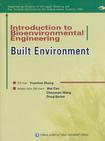生物环境工程导论
出版时间:2010-12 出版社:中国农业大学出版社 作者:张源辉 编 页数:200 字数:240000
内容概要
Human Thermal Comfort Zone、Thermal Control for Livestock
Facilities、Heat Stress in Animal Production、Threshold Limits for
Typical Indoor Pollutants等。
书籍目录
Module 1 : Introduction
1.1 Air Composition
1.2 Variables and Units
1.3 Energy Use for Buildings
1.4 Course Objectives
1.5 Laboratory Report Policies
1.6 Recommended Laboratory Report Format
1.7 Lab Report Example
1.8 Homework Format
1.9 Homework Example
Module 2 : Psyehrometrics
2.1 Psychrometric Properties
2.2 Psychrometric Chart
2.3 Thermal Comfort Zone
2.4 Case Study: Psychrometrics Classroom Exercise
2.5 Problems
Module 3 : Psychrometric Processes
3.1 Sensible Heating or Cooling
3.2 Sensible Heating with Humidification
3.3 Sensible Cooling with Dehumidification
3.4 Evaporative Cooling
3.5 Adiabatic Mixing of Two Moist Air Streams
3.6 Problems
3.7 Laboratory Exercise: Psychrometrics
Module 4 : Calculation of Psychrometric Properties
4.1 Case Study: Calculation of Psychrometric Properties
Module 5 : Basics of Heat Transfer
5.1 Conduction Heat Transfer
5.2 Heat Conduction through a Multi-Layer Wall
5.3 Heat Conduction through a Parallel Wall
5.4 Convection Heat Transfer
5.5 Radiation Heat Transfer
5.6 Radiation Heat Exchange
5.7 Problems
Module 6 : Heat Transfer through a Building Envelope
6.1 Heat Transfer through a Wall
6.2 Heat Transfer through a Ceiling
6.3 Heat Transfer through a Floor
6.4 Heat Transfer through Exterior Perimeter
6.5 Case Study 1 : Improve energy efficiency for a building
6.6 Case Study 2 : Improve energy efficiency in a watch assembly
plant Beijing, China
6.7 Laboratory Exercise: Heat transfer through building
shelters
Module 7: Heat and Moisture Production within Buildings
7.1 Sensible Heat from Lights
7.2 Sensible Heat from Equipment
7.3 Heat and Moisture from Management Activities
7.4 Latent Heat and Moisture Relationship
7.5 Heat and Moisture Production of Occupants
7.6 Net Sensible Heat Transfer through Buildings
7.7 Net Moisture and Pollutants Production within Buildings
7.8 Carbon Dioxide Production
Module 8.Mass and Energy Balance for Ventilated Airspaces
8.1 Sensible Heat Balance Ventilation Requirement
8.2 Moisture Balance Ventilation Requirement
8.3 Pollutant Balance Ventilation Requirement
8.4 Minimum Ventilation Rates
8.5 Heating Capacity Calculation
8.6 Case Study: Ventilation Design for a Vehicle Cabin
8.7 Problems
8.8 Laboratory Exercise: Measuring Ventilation Rate in an
Airspace
Module 9: Ventilation Graph
9.1 Heat Deficit Temperature
9.2 Maximum Ventilation Requirement
9.3 Work Sheet: Ventilation Requirement
9.4 Problems
9.5 Case Study: Ventilation Requirement
9.6 Laboratory Exercise: Fan Test Chamber
Module 10: Physiological Responses
10.1 Human Thermal Comfort Zone
10.2 Thermal Control for Livestock Facilities
10.3 Heat Stress in Animal Production
10.4 Threshold Limits for Typical Indoor Pollutants
Module 11 : Room Air Cleaning Efficiency
11.1 Case Study: Evaluation of Air Cleaning Devices
Module 12: Comprehensive Case Studies
12.1 Design a Cabin Minimum Air Flow Rate
12.2 Role Playing-Troubleshooting
12.3 Barn Description for Troubleshooting
Appendix 1 : Building Sector Energy Consumption
Appendix 2 : Psychrometric Property Calculations
Appendix 3 : Appendices from Louis D. Albright' s Book
References
Author' s Biography
Acknowledgement
章节摘录
1.1 Air Composition In order to define air quality, a baseline reference to “clean air” or “standard air” should first be established. A typical clean air is the dry atmosphere air found in rural areas or over the ocean far from air pollution sources. The chemical composition of such clean dry atmospheric air is listed in Table 1-2. The atmospheric air also contains from 0.1% to 3 % of water vapor by volume depending on temperature. The clean air defined in Table 1-2 is typical because in many instances, other traces of components are also found in the atmosphere that is considered clean. These other tracer components include ammonia, sulfur dioxide, formaldehyde, carbon monoxide, iodine, sodium chloride, and particulate matters such as dust and pollens. Based on the definition of clean air, air quality refers to the degree of pollution of the clean air. In general, the lower the oncentration of airborne pollutants, the better the air quality. Airborne pollutant is defined as the substances in the air that can harm the health and comfort of humans and animals, reduce performance and production of plants, or accelerate damage to equipment. Airborne pollutants can be in the form of solid (e. g. , particulate matters), liquid (e. g. , mists) and gaseous substances. Excessive high concentrations or depletion of substances listed in Table 1-2 can impose serious air quality problems. For example, it is suspected that excessive emissions of carbon dioxide and methane are responsible for greenhouse effects and global warming. ……
图书封面
评论、评分、阅读与下载
